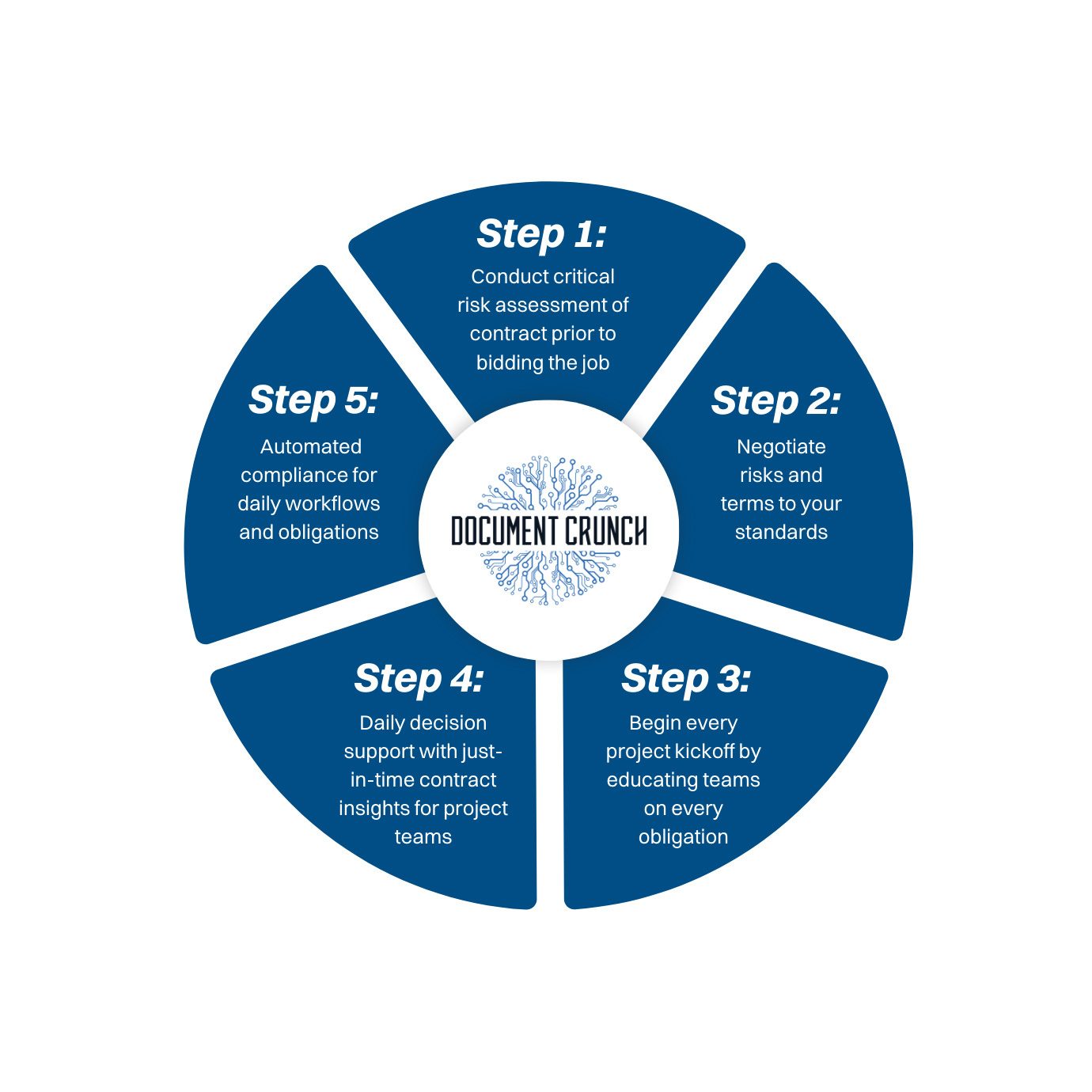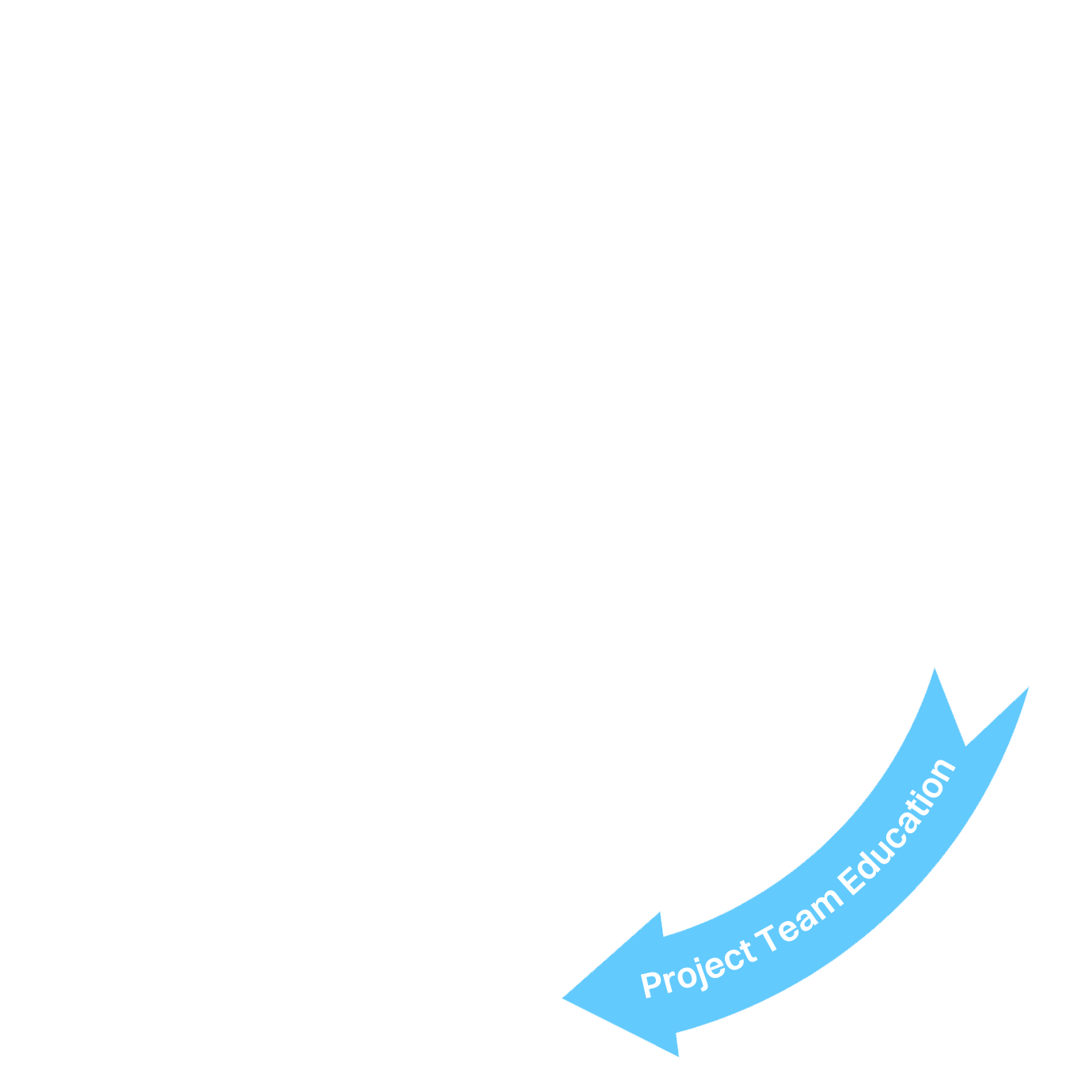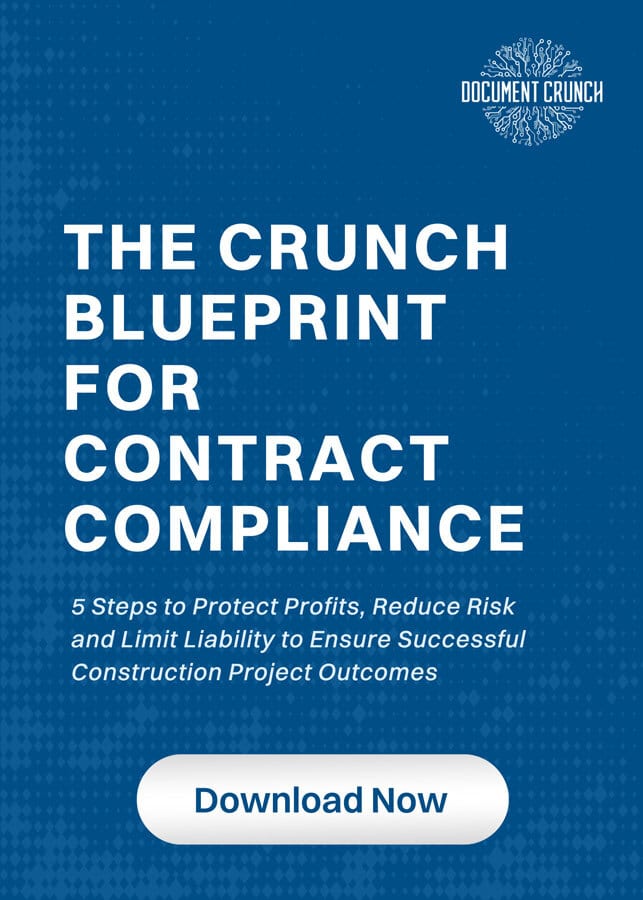5 Steps to Ensure Successful Project Outcomes
Studies show 50% of construction projects finish late or over budget, make sure yours is not one of them with these five contract compliance steps.
BY DOCUMENT CRUNCH
In the $13T global construction industry, an estimated 50% of projects finish late or over budget. That means one or more stakeholders will end up paying more than they originally planned. Who will pay? That depends on the contract and related documents: how it was negotiated and how the team administered it.
This is where “contract compliance” comes in. It’s how daily decisions align with contractual obligations. It applies to the entire project lifecycle and every person on every project. Not complying with the contract leads to disputes, claims, and litigation, but we all know, complying with the contract is easier said than done.






At Document Crunch, we’ve come up with The Blueprint for Contract Compliance, a five-step guide, or best practices, for contract compliance. Though fewer, projects will still finish late and over budget and disputes will still arise, but when they do, contract compliance will help prevent you from being the one who pays for it.
Here’s an overview (download the full guide):
The 5-Step Blueprint for Contract Compliance
PQ: DOE OKs $9.2B for
FORD'S BLUEOVAL PROJECT
Risk Assessment: Conduct critical risk assessment of contracts prior to bidding
Evaluate new contracts against your company’s risk tolerance and business objectives before bidding. Review company’s business goals, project pipeline, and cash flow. Clarify risk tolerance and non-negotiable terms. Use AI to quickly identify key provisions and potential issues. Document the entire risk assessment process for future reference.
1
Negotiation: Negotiate risks and terms to your standards
Ensure contracts provide appropriate legal protection and clearly defined responsibilities. Allocate risks fairly among stakeholders and align terms with the final project scope. Address common pitfalls based on past project experiences. Use AI to research and brainstorm contract language variations.
2
Project Team Education: Begin every project kick-off by educating teams on every obligation
Thoroughly transfer contract knowledge from the back office to the field. Create simplified, accessible, jargon-free summaries of contract terms for project teams. Ensure all stakeholders have reviewed and understand their responsibilities. Use AI to generate a “playbook” reference guide for project teams.
3
Decision Support: Daily decision support with just-in-time contract insights for project teams
Provide teams with 24/7 remote access to contract information. Enable them to get quick answers and make informed decisions with the help of AI-powered tools that integrate with project management software.
4
Automated Compliance: Automated compliance for daily workflows and obligations
Leverage AI to automate issue spotting within contracts, simplify legalese, and integrate compliance into daily workflows. Automate routine compliance tasks to save time. Create a system for capturing and applying lessons learned from each project. Continuously improve contract processes based on project experiences.
